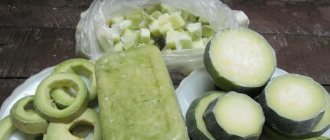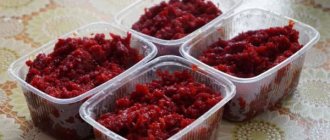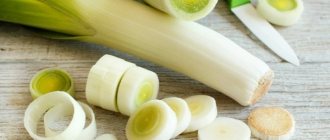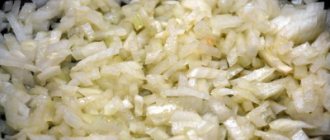Is it possible to freeze ginger?
The product has long been famous for its beneficial properties. It is actively used in folk medicine. There are dishes, drinks, sauces that cannot be prepared without this root. The dried analogue cannot be used everywhere. I wish I had fresh ginger on hand.
And more and more often housewives ask whether it is possible to freeze fresh ginger root in the freezer. After all, spicy, hot vegetables are stored exclusively at above-zero temperatures. It is not always possible to marinate and dry the excess. In fact, ginger tolerates freezing well and retains its positive characteristics.
Do you freeze ginger root?
Not really
Frozen ginger root is used for drinks, sauces, cold and hot dishes. They put it into the chamber in pieces, grated, and often combine it with lemon. You can freeze the pickled root.
How to properly prepare ginger in sugar for storage: cooking recipes
Important: If you have not tried candied ginger yet, we recommend trying this delicacy. The advantage of making your own treats is that you will be sure that there are no harmful additives, which is good for your health.
Cooking ginger in sugar requires some free time, but is easy to do:
- Prepare the necessary ingredients: peeled ginger root (300 g), water (2 cups), sugar (2 cups).
- Pour sugar into an enamel pan and pour in water. Bring the syrup to a boil, stirring it.
- Then add pre-chopped ginger cubes and mix thoroughly. Cook this mixture over low heat for at least 45 minutes.
- Place the mixture in a sieve. The liquid that drains is perfect as an additive to tea.
- Give the ginger a little time to cool, then roll the pieces in sugar, carefully place them on paper and leave to dry.
- In 5 hours the candied fruits will be ready. Store them in a jar in the refrigerator.
Ginger and sugar can be stored for a long time. This delicacy can last in the refrigerator for up to 2 months, but is eaten faster, as practice shows.
If you roll the ginger pieces in sugar and lightly sprinkle them with cinnamon, the taste will be very piquant.
If you have dry ginger, you can easily make candy from it. Dried ginger should be cut into pieces, slices. You need to soak it first.
Important: To remove the sharpness, ginger needs to be soaked, changing the water periodically. The “age” of the ginger also matters: the older, the spicier.
Candied ginger
The benefits of ginger are great, but do not forget that there are contraindications for use. Even if there are no contraindications, excessive consumption of ginger is undesirable. Don’t set yourself the goal of stocking up on as much ginger as possible; it’s available on supermarket shelves all year round. Remember that the product can be stored for 6 months when frozen, and 1-2 months in the refrigerator. We also recommend marking the container or bag with the date, then you will know exactly when the product expires.
We invite you to watch a video in which you will see how to cook ginger in sugar.
Does ginger lose its beneficial properties when frozen?
Freezing is considered one of the most gentle ways to prepare food. Vegetables, fruits, and berries retain the maximum amount of vitamins and minerals. The same cannot be said about conservation. It is only important to adhere to the temperature of -18-20 degrees, and do not neglect the preparation rules.
Useful properties of frozen root:
- relieves fever;
- strengthens the immune system;
- reduces sore throat;
- eliminates metabolism;
- increases the elasticity of blood vessels;
- promotes the removal of sputum.
The list doesn't end there. The product really has healing properties. Vitamin C or ascorbic acid is considered the most vulnerable. It is preserved in frozen ginger by 80-90%. What remains are essential compounds, iron, zinc, magnesium, and other useful substances.
Gingerol is completely preserved in the frozen preparation. It is this substance that promotes weight loss.
How to dry spices for long-term storage
A good way to preserve ginger at home is by drying it. In this form, the root does not lose its beneficial properties and taste.
Do I need to clean it?
Whether to peel the peel or not, because it is under it that there is a greater amount of useful substances, depends on its condition. If it is thin and light, it is enough to wash it with the hard side of a foam sponge or a special brush for cleaning vegetables. If in doubt, cut with a knife, peeler or scrape (you can also use a spoon for this).
The natural way
There are several ways to dry ginger for storage. This is the simplest option, but it takes a long time. How to dry:
- Wash the root, peel if necessary.
- Cut into slices, preferably of the same thickness. If you cut it coarsely, drying will take an indefinite time, and mold may appear on the workpiece.
- Place the pieces in a single layer on a clean cotton cloth, parchment paper or plain white paper (not newspaper!) at home in a well-ventilated room or on a balcony, away from sunlight.
- To ensure uniform drying, stir the raw materials periodically. The pieces should become hard to the touch and brittle.
Without resorting to household appliances, you can dry the entire roots in this way, you just have to turn them over a little more often. Therefore, it is better to dry it in a suspended state, tying and hanging each specimen with a rope so that they do not touch each other.
It is worth considering that dried ginger is much spicier than fresh. Its dosage for dishes will be lower, in addition, it is recommended to soak it a little before using.
In the oven
This process will take approximately 2-3 hours. Oven drying steps:
- Cut the washed and peeled root vegetable into equally thin slices. Large ones will take longer to dry.
- Place the ingredients in one layer on a baking sheet lined with parchment paper.
- Set the oven temperature to +50°C and place the workpiece in it. Leave it like this for 1 hour.
- Once the timer goes off, it's time to turn the slices over and let them dry for another 1 hour.
- Now you can check the workpiece. Well-dried slices do not bend, but break immediately. A gray tint should be visible on the break; if not, continue drying.
- When ready, remove the tray and let cool at room temperature.
In an electric dryer
You can prepare ginger for long-term storage using a vegetable dehydrator. It will take 6-7 hours plus time to prepare the root.
- With this method, it is necessary to peel the root, even if its peel is very thin. During drying, it may crack and clog the device.
- Cut the peeled root into thin but large enough slices or cubes so that they do not fall through the mesh cells.
- Place the containers in the dryer for 5-6 hours at a temperature of 50°C. After 2-3 hours, swap them to ensure uniform drying of the raw materials.
Dried ginger should be stored in a well-closed glass container in a cool, dark place for no more than 4 months. It is during this period that it does not lose its properties. For ease of use, it can be crushed to a ground state:
- Grind the dry preparation in a blender, coffee grinder or crush in a mortar.
- Sift the resulting powdery mass through a fine sieve.
- Grind the large pieces again. And sift again.
- Repeat until the powder becomes homogeneous.
Product selection and preparation
Do not freeze spoiled ginger. Choose a large, fresh root with evenly colored skin. We break off the shoot, aromatic juice should appear. Our stores mainly sell Asian varieties. They store well at sub-zero temperatures.
Preparation instructions:
- We break off all the shoots. It is better to purchase the root without them or with a minimum amount.
- Next, rinse with cold water and remove dirt.
- Wipe with a napkin. Or leave it on the table and let it dry.
- Cleaning it up. Using a knife you can remove the skin only from smooth specimens. It is better to carefully scrape it with an ordinary teaspoon. The skin will peel off easily. Sometimes a steel wool is used.
- Now we cut and grate, depending on what kind of frozen product we need.
You need to freeze immediately after washing and cleaning. You can’t leave ginger in this form, it will quickly disappear.
How to store radishes in storage (basement, cellar)
Radish varieties are well stored: Dungansky, Virovsky white, Chinese, Red giant.
Radishes are sensitive to mechanical damage, so when harvesting, as well as during storage, you need to handle them with care.
Also, even slightly frozen root vegetables should not be sent for storage.
Dig up radishes in dry weather, then they will be less contaminated with soil.
The tops of the dug radishes are immediately cut off, leaving 2 cm tails. If this is not done, the leaves begin to quickly evaporate water, and the radishes wither.
You cannot actively peel radishes from the soil, otherwise you can damage their delicate skin, and such radishes will not be stored for a long time.
Before storing for a long period of storage, under no circumstances should radishes be washed. Otherwise, rot and other diseases will appear.
The best temperature for storing radishes is from 0° to +1° with an air humidity of 90-95%. To maintain high humidity in the storage, it is recommended to spill water on the floor.
Radishes are stored in tight boxes up to 20 kg, covered with damp sand or peat. The sand should not be wet, but should retain its shape when squeezed in your hand.
A layer of dry chalk or ash is poured on top of the sand. Thanks to the alkaline environment, radishes are less susceptible to disease.
You can also arrange the radishes in rows on racks and sprinkle them with damp sand.
To prevent radishes from deteriorating during storage, sand is mixed with chalk or lime (1 kg of lime 50 kg of sand), but the lime must be slaked, otherwise the root crops will get severely burned.
You can use wet sawdust instead of sand, which helps keep radishes healthy, since the essential oils contained in sawdust have disinfectant properties.
The clay method is used less frequently. To do this, dilute the clay mash in a metal container until it becomes creamy. Root vegetables are placed in this mash, then they are placed in boxes with slots that replace sieves. The excess mixture is poured through the cracks, and a thin layer of clay remains on the root vegetables, which, when dried, forms a durable shell that prevents the radish from withering and spoiling.
If for some reason these storage methods are unacceptable, radishes can be stored in thick plastic bags up to 50 kg.
The bags are not tied, but placed vertically on racks. The carbon dioxide that accumulates in the bags helps preserve the radishes.
Radishes are perceived by us, first of all, as an early vegetable, but we want to extend the time of its use as long as possible. How to choose radishes so that you can preserve them for the winter, when these vitamins are especially needed? This question is probably of interest to many summer residents who manage to grow this vegetable, thanks to its short growing season, several times a season. Radishes are pickled, canned and frozen, but to preserve the maximum amount of useful components, it is best to store them fresh.
The harvest of early varieties can be stored for no more than a few days; root crops quickly wither, lose moisture, and along with it their taste and beneficial properties. There is no question of storing it for the winter. Late ripening varieties are a completely different matter. Their turnips are harder, often larger, they can be stored much longer, and it is from them that those that should remain for the winter are selected.
The most common late-ripening varieties are “Red Giant” with its large cylindrical roots of red color and a slightly pungent taste, “Ice Icicle”, which justifies its name in appearance, “Volcano”, whose 200-gram root vegetables ripen for almost two months, Chinese “Daikon” Prizewinner" with white root vegetables weighing up to 700 g, "Dugansky", "Virovsky white".
In the middle zone, autumn radishes are sown from the beginning of August, and late varieties ripen by the middle or even the end of September. It is this autumn harvest that can be stored for several months; it is left for the winter. Warmer regions grow radishes until October; they are not afraid of slight frosts, but the root crops should not be allowed to freeze; they are not suitable for long-term storage.
Freezing ginger
Now let's figure out whether it is possible to freeze fresh, pickled ginger for storage, and what is the best way to do this. We offer five proven blank options. In addition to the freezer, additional packaging will be required. It is important for us to preserve the juiciness and aroma. Therefore, exclusively sealed containers are used.
Suitable Packing:
- Vacuum bags;
- polyethylene;
- containers.
Not suitable:
- foil;
- paper;
- glass containers.
Sometimes it is convenient to use ice molds or silicone containers. They are necessary for primary freezing. After icing, the frozen cubes are transferred to bags, airtight containers with tight-fitting lids. Cubes are convenient for freezing broth for soup, parsley and other herbs.
Fresh
Frozen whole ginger retains its qualities perfectly. The only point is that it is better to divide large specimens into several parts in order to use them 1-2 times.
Cooking instructions:
- The washed, peeled root needs to be slightly dried. You can wipe with a paper towel.
- Wrap individually in cling film and place in the freezer.
- After 4-5 hours, transfer the frozen product to a container and return it to the freezer.
It is allowed to immediately pack into bags. It is advisable to squeeze out the air. Miniature bags with a zipper closure work great.
Features of freezing fresh ginger
With lemon
Ginger and lemon are an almost classic combination. The duet is often used in folk medicine. This couple makes an amazing tea against colds and for immunity. The drink warms you up perfectly in winter and delights with its amazing aroma. We offer to prepare a convenient semi-finished product for its preparation. You don’t have to deal with chopping and cleaning food every time. You just need to throw the cube into a teapot or cup.
Cooking instructions:
- Choose a juicy lemon. Rinse, then pour boiling water for 5 seconds. Rinse with cold water.
- Cut the citrus into pieces, remove the seeds.
- We cut the ginger. Place in a blender with lemon. We use any proportions. If you like sour drinks, add more citrus.
- Grind until smooth. But it is allowed to grind through a meat grinder. Or grate the root and finely chop the citrus.
- Place the aromatic mixture into ice cube trays and compact slightly. You can use small silicone molds for lollipops, marmalade, and miniature cupcakes. We send him to the cell.
- After 4-5 hours, we take out the frozen cubes and put them in a bag or container. Return to the freezer.
Sometimes honey is added additionally. We do not recommend doing this. When brewing tea or adding boiling water, it will lose its beneficial properties. There is an opinion that heating honey is dangerous to health. It makes more sense to add a spoonful to a cup of warm drink.
Instead of ice cube trays, it is convenient to use inserts from a box of chocolates. The figures are easily squeezed out of them.
Pickled
Marinade does not guarantee long-term preservation. Soon the product begins to deteriorate anyway. Some housewives prefer to add additional vinegar. The stomach will definitely not be happy with this approach. It makes more sense to put the excess in the freezer.
How to properly freeze ginger, instructions:
- Place the ginger in portions into bags. Conveniently packaged in small plastic containers.
- Distribute all the liquid evenly on top. We tie it, close it.
- Place in the freezer and store.
The root frozen in the marinade may slightly lose its pungency, and in rare cases, the consistency will suffer. The pieces become softer, but do not become soggy.
Grated
The most convenient, universal option. Suitable for absolutely various dishes, snacks, drinks. You don’t have to wait long for the whole root to thaw, then chop it. It is better to grate on a fine grater. Large chips are sometimes inappropriate. Horseradish can also be frozen in grated form.
How to freeze ginger, instructions:
- Grate peeled ginger in any quantity.
- Place in ice trays as in the previous version. Then transfer the frozen cubes to an airtight container.
- Or we immediately pack it into small bags and send it to the camera.
- Or place one portion at a time on cling film. Then we wrap it several times, you should get a briquette.
Ginger frozen in thin cling film does not store well. After hardening, we recommend placing the briquettes in a tight bag.
Freezing and storing grated ginger
Chopped root
A simple way is to package the cut pieces and send them to the chamber. It's just difficult to separate frozen slices. You will have to pack it in small portions. Additional waste of time and materials. We offer another way.
Cooking instructions:
- Cut the ginger into circles, slices, bars, and strips. We choose the option that is convenient for ourselves.
- Spread the film on a cutting board. Lay out the pieces in one layer.
- Place in the freezer for a couple of hours.
- We take it out and quickly pour the frozen pieces into any container with a lid. We put it in the camera.
Sometimes ginger is first rolled in sugar, then put in the freezer. You can simply pour sand in containers. Ice cubes made from pieces, dipped in sugar syrup, lemon or any other juice, work well.
What to freeze in
Various packaging are used for freezing ginger. It can be frozen in a tightly sealed food container. Plastic containers with appropriate markings are suitable for this. It is convenient to stack them on top of each other for large volumes of freezing. This is how gardeners save space in the freezer.
See also
What is the best way to freeze bell peppers in the freezer for the winter at home, shelf life
Read
Owners of large freezers prefer to freeze peeled ginger whole. With this method, it is better to wrap it in a sheet of foil. Then, to prevent freezing, the product should be packaged in a plastic bag.
It is convenient to use food grade plastic film to pack portions of the semi-finished product. It can be used to wrap the product several times. It is important to ensure that there are no spaces left unoccupied by packaging.
Some summer residents freeze ginger cut into pieces by wrapping it in portions in food foil. Such frozen portions are also placed in a plastic bag or plastic container.
It is important to remember: properly packaged ginger retains its beneficial properties and taste when frozen.
How to defrost correctly
For hot sauces, soups, and drinks, frozen preparations are used. No pre-thawing is required. The whole root is sometimes slightly thawed, then chopped and cut into slices. For other purposes, complete defrosting is required.
Defrosting methods:
- on the refrigerator shelf. Transfer the frozen packaging and leave for a day;
- in the microwave. We set a special mode, do not allow the product to overheat;
- in cold water. We place the entire package without letting the contents get wet.
The basic rule is that you cannot heat a frozen root or keep it at high temperatures. Otherwise, a lot of moisture will be released, and we will get limp, tasteless ginger.
Freezing ginger with lemon
Defrosting
It is better to defrost ginger at room temperature. It is not recommended to use a microwave oven or slow cooker. Thermal exposure leads to loss of vitamins. The bag taken out of the freezer can be placed in water. This will speed up the defrosting time.
Defrosting takes 30-150 minutes at a room temperature of 18-20 degrees. It is advisable to wait for the product to defrost naturally. When cooking, this will improve the taste of the finished dish.
Where and how long can fresh ginger be stored for winter, summer, in the refrigerator: conditions and shelf life
Ginger root has long become not a curiosity, but an everyday product. It can be added to various dishes, brewed tea, consumed pickled as a snack, in the form of dried pieces, with sugar or honey, or in the form of gingerbread. You can even find chocolate with this spice.
Most often, ginger is presented on store shelves in this form:
- fresh:
- powder;
- marinated.
Ginger grows in Southeast Asia and India. But it is popular far beyond the borders of these countries. I fell in love with ginger not just for its pronounced taste, but also for its medicinal properties.
A few words about the benefits of ginger:
- Helps fight nausea during seasickness, motion sickness, and toxicosis. Reduces blood cholesterol levels.
- It is an immunostimulant; it is useful to use ginger to prevent seasonal viral diseases.
- Reduces joint inflammation and removes toxins from the body.
- It is a prophylactic remedy for the fight against helminths; it is not without reason that it is consumed with sushi.
- Helps fight excess weight.
Important! Ginger is not a perishable product, which is why it has long been present on ships during voyages. Correct storage conditions will help preserve the beneficial properties of this product.
What is the best way to store ginger?
On the supermarket shelf you may see wrinkled, soft ginger; know that this is not a completely fresh product. The root should be dense, without any stains or mold. The presence of veins in ginger indicates that the root is not young.
Storage conditions for fresh ginger:
- If you bought fresh ginger, remember not to keep it out of the refrigerator.
- Putting ginger in the refrigerator will extend its life by one week. You can store ginger exactly this long, provided that the product is not wrapped in cling film or paper.
- If you wrap the aromatic root in cling film, it will last for several weeks, but not longer than 1 month.
Important! Do not put ginger in the refrigerator until you are sure the root is dry. Do not cut off the skin or peel the tubers, you may spoil the product
Unusual storage methods
Ginger is gaining great popularity in Russia. Housewives are mastering many ways to store this spice, including unusual ones.
With the help of alcohol
Store using alcohol as follows:
- Peel the root by scraping off a thin layer of skin. For this purpose, you can use a teaspoon or potato peeler.
- Cut into small pieces or chop on a coarse grater.
- Place the prepared raw materials in a clean glass container.
- Pour in liqueur, vodka or sherry.
- Seal the container tightly and store.
In vacuum jars and bags
Grated, chopped, pickled ginger is stored in the refrigerator or freezer in vacuum jars and bags. Raw materials should be placed in containers in small portions, this makes it more convenient to use. And the grated seasoning can be frozen into cubes in small molds, and then placed in a vacuum container.
With sugar
This is the most elegant way to store spices. Fragrant candied slices are reminiscent of numerous oriental sweets and are well suited for eating with tea.
Cooking method:
- Dilute brown sugar in warm boiled water in a 1:1 ratio;
- Place thin slices of ginger tubers in an enamel bowl and fill with syrup;
- cook for at least 15 minutes over low heat;
- cool;
- roll each slice in sweet powder and place on a baking sheet;
- bake for 30 minutes in a hot oven at 80 degrees;
- store like dried ginger.
Storage in the ground
The ginger root is preserved well in soil consisting of equal parts of peat, sand and humus. The pot with soil and ginger should be kept in a dry, dark place, so the plant will not germinate. When sprouted, fresh leaves are used for food.
Which roots are suitable for storage?
Thick and dense roots covered with a thin light brown skin can today be found in almost any supermarket or grocery market. Before you buy the first product you come across, you need to consider that you can only store high-quality and fresh ginger. Therefore, we definitely pay attention to the following points:
- The fresh root, which has not been frozen or chemically processed to prolong its shelf life, exudes a pleasant aroma and has a peppery taste. The flesh should be light yellow in color, any level of brightness is acceptable.
- Preference is given to dense and elastic products, covered with a very thin skin that can literally be peeled off with a fingernail. If the peel is thick, the ginger is already stale and can only be preserved by grinding it into powder.
- A wrinkled and withered appearance of the root indicates a violation of the product storage rules. Such a component has already lost most of its moisture and will not be able to please with its taste properties.
Tip: Do not buy ginger root, which is sold in vacuum packaging. This is not a way for manufacturers to extend the shelf life of a product, but an attempt to mask some problems. Even if the product is fresh and of high quality, it will quickly begin to deteriorate after removing the wrapper due to a sudden change in storage conditions.
- There cannot be any shading on the spine. Dull flesh color or questionable spots occur when the product is stored in conditions of high humidity. This component usually has a dull aroma and virtually no pungency.
Before you buy ginger, you should keep in mind that it is used quite sparingly. You should not make large reserves at once, especially if you do not plan to use it for making tea or compotes.











